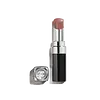What's inside
What's inside
 Key Ingredients
Key Ingredients

 Benefits
Benefits

 Concerns
Concerns

 Ingredients Side-by-side
Ingredients Side-by-side

Diphenyl Dimethicone
EmollientOctyldodecanol
EmollientDiisostearyl Malate
EmollientDipentaerythrityl Tetrahydroxystearate/Tetraisostearate
Skin ConditioningSynthetic Wax
AbrasiveDextrin Isostearate
Skin ConditioningEthylene/Propylene Copolymer
AbrasiveC8-12 Acid Triglyceride
Skin ConditioningDisteardimonium Hectorite
StabilisingPropylene Carbonate
SolventIsostearic Acid
CleansingSilica
AbrasiveEthylhexyl Palmitate
EmollientAlumina
AbrasiveJojoba Esters
EmollientParfum
MaskingPolyglycerin-3
HumectantTribehenin
EmollientTocopheryl Acetate
AntioxidantSorbitan Isostearate
EmulsifyingAcacia Decurrens Flower Wax
EmollientHelianthus Annuus Seed Wax
Skin ConditioningPalmitoyl Tripeptide-1
Skin ConditioningCI 12085
Cosmetic ColorantCI 15850
Cosmetic ColorantCI 15985
Cosmetic ColorantCI 17200
Cosmetic ColorantCI 19140
Cosmetic ColorantCI 42090
Cosmetic ColorantCI 45380
Cosmetic ColorantCI 45410
Cosmetic ColorantCI 73360
Cosmetic ColorantCI 77163
Cosmetic ColorantCI 77491
Cosmetic ColorantCI 77492
Cosmetic ColorantCI 77499
Cosmetic ColorantCI 77742
Cosmetic ColorantCI 77891
Cosmetic ColorantMica
Cosmetic ColorantDiphenyl Dimethicone, Octyldodecanol, Diisostearyl Malate, Dipentaerythrityl Tetrahydroxystearate/Tetraisostearate, Synthetic Wax, Dextrin Isostearate, Ethylene/Propylene Copolymer, C8-12 Acid Triglyceride, Disteardimonium Hectorite, Propylene Carbonate, Isostearic Acid, Silica, Ethylhexyl Palmitate, Alumina, Jojoba Esters, Parfum, Polyglycerin-3, Tribehenin, Tocopheryl Acetate, Sorbitan Isostearate, Acacia Decurrens Flower Wax, Helianthus Annuus Seed Wax, Palmitoyl Tripeptide-1, CI 12085, CI 15850, CI 15985, CI 17200, CI 19140, CI 42090, CI 45380, CI 45410, CI 73360, CI 77163, CI 77491, CI 77492, CI 77499, CI 77742, CI 77891, Mica
Water
Skin ConditioningCarthamus Tinctorius Seed Oil
MaskingSucrose Stearate
EmollientCaprylic/Capric Triglyceride
MaskingMyreth-3 Myristate
EmollientPEG-12
HumectantButylene Glycol
HumectantPentaerythrityl Tetracaprylate/Tetracaprate
EmollientGlycerin
HumectantDimethicone
EmollientCetyl Alcohol
EmollientAcrylates/C10-30 Alkyl Acrylate Crosspolymer
Emulsion StabilisingBHT
AntioxidantBisabolol
MaskingCaprylyl Glycol
EmollientDisodium EDTA
Parfum
MaskingPhenoxyethanol
PreservativeSodium Acetate
BufferingSucrose Distearate
EmollientTriethanolamine
BufferingXanthan Gum
EmulsifyingZinc Gluconate
Skin ConditioningWater, Carthamus Tinctorius Seed Oil, Sucrose Stearate, Caprylic/Capric Triglyceride, Myreth-3 Myristate, PEG-12, Butylene Glycol, Pentaerythrityl Tetracaprylate/Tetracaprate, Glycerin, Dimethicone, Cetyl Alcohol, Acrylates/C10-30 Alkyl Acrylate Crosspolymer, BHT, Bisabolol, Caprylyl Glycol, Disodium EDTA, Parfum, Phenoxyethanol, Sodium Acetate, Sucrose Distearate, Triethanolamine, Xanthan Gum, Zinc Gluconate
 Reviews
Reviews

Ingredients Explained
These ingredients are found in both products.
Ingredients higher up in an ingredient list are typically present in a larger amount.
Parfum is a catch-all term for an ingredient or more that is used to give a scent to products.
Also called "fragrance", this ingredient can be a blend of hundreds of chemicals or plant oils. This means every product with "fragrance" or "parfum" in the ingredients list is a different mixture.
For instance, Habanolide is a proprietary trade name for a specific aroma chemical. When used as a fragrance ingredient in cosmetics, most aroma chemicals fall under the broad labeling category of “FRAGRANCE” or “PARFUM” according to EU and US regulations.
The term 'parfum' or 'fragrance' is not regulated in many countries. In many cases, it is up to the brand to define this term.
For instance, many brands choose to label themselves as "fragrance-free" because they are not using synthetic fragrances. However, their products may still contain ingredients such as essential oils that are considered a fragrance by INCI standards.
One example is Calendula flower extract. Calendula is an essential oil that still imparts a scent or 'fragrance'.
Depending on the blend, the ingredients in the mixture can cause allergies and sensitivities on the skin. Some ingredients that are known EU allergens include linalool and citronellol.
Parfum can also be used to mask or cover an unpleasant scent.
The bottom line is: not all fragrances/parfum/ingredients are created equally. If you are worried about fragrances, we recommend taking a closer look at an ingredient. And of course, we always recommend speaking with a professional.
Learn more about Parfum